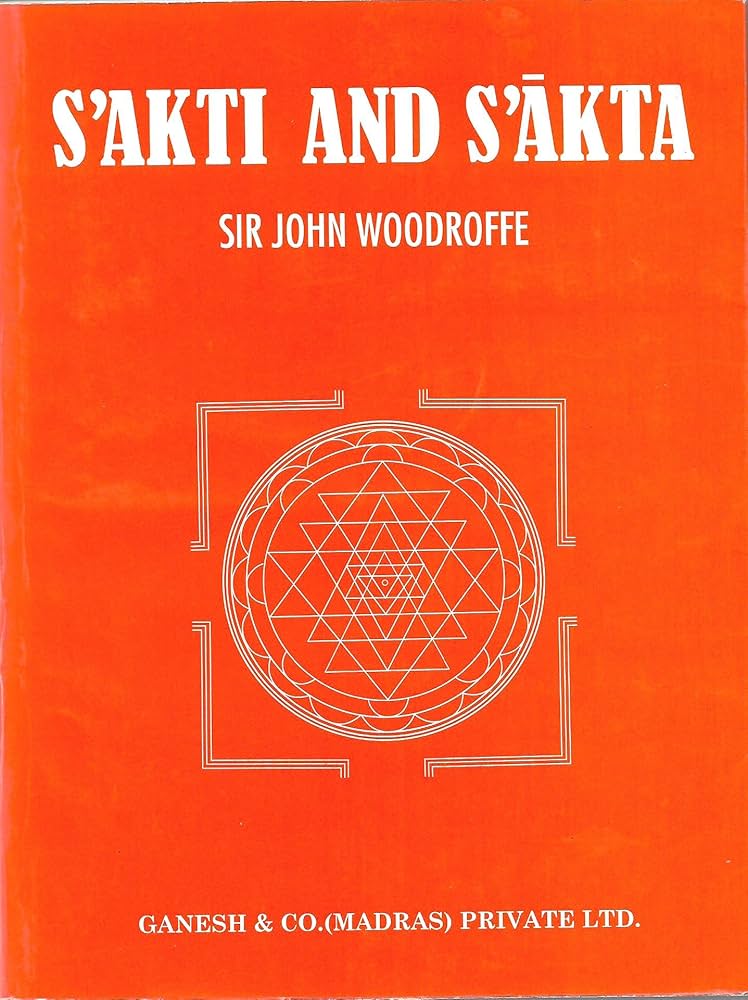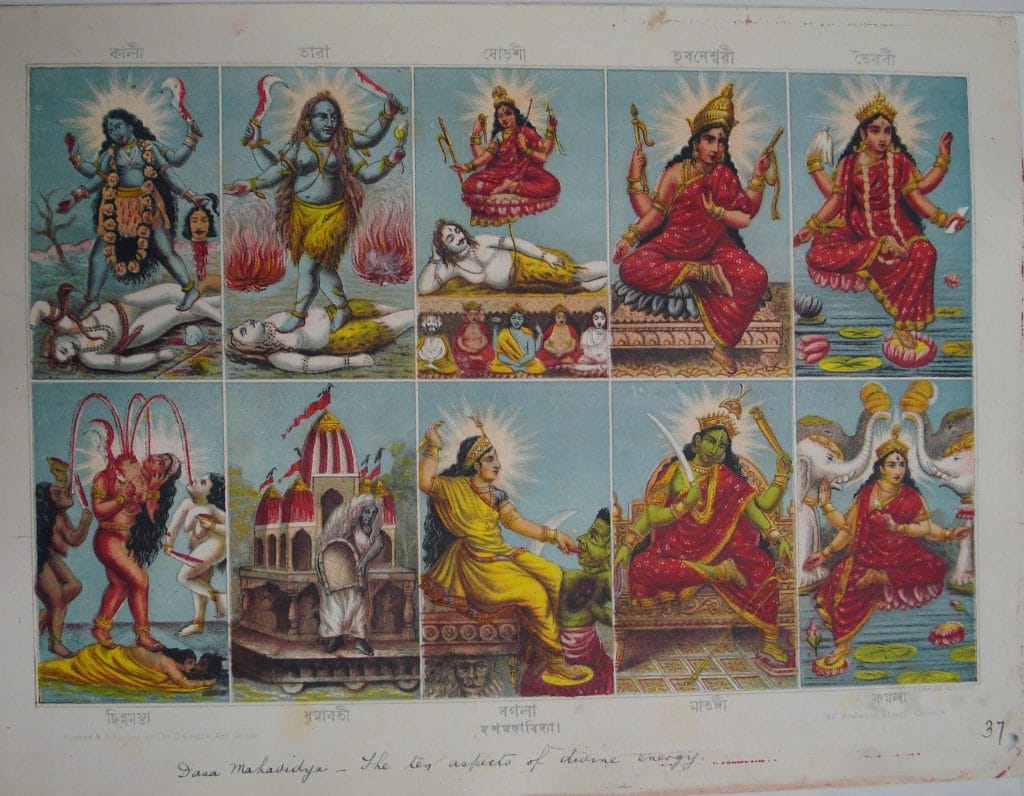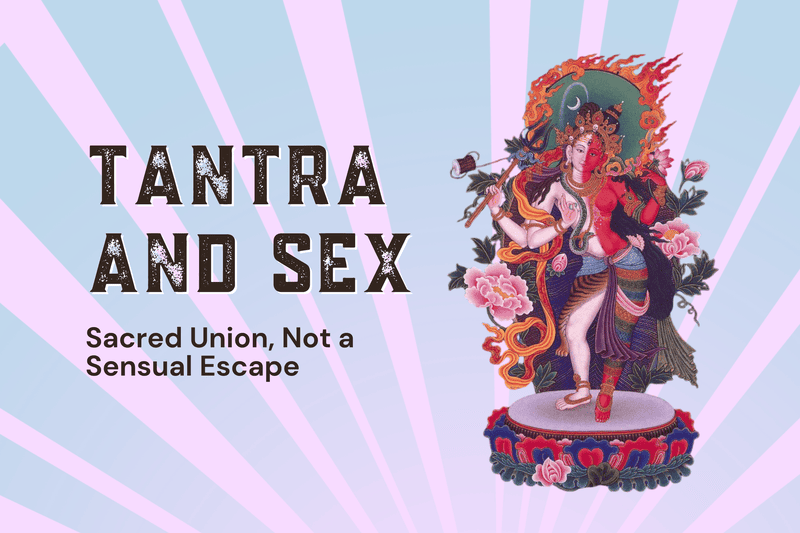In this blog, you’ll read about:
- The origin and evolution of Tantra
- What authentic Tantra is
- The Tantric path of the Das Mahavidyas
- How you can explore the path of Tantra Sadhana
What is the first image that comes to mind when you hear the word ‘Tantra’?
If it’s a cremation ground filled with incense smoke, skulls, and voodoo dolls, you are not alone.
For centuries, Tantra meditation has been cloaked in secrecy, mystery, and misunderstanding. Many associate it with black magic.
Yet, at its heart, real Tantra or Tantra Sadhana (the spiritual practice of Tantra) is not obscure or dangerous. It is one of the most profound and sacred paths to self-realisation, as ancient, pure, and divine as any other spiritual tradition of Sanatana Dharma.
This blog aims to gently clear the chaos and offer sincere seekers an introduction to Tantra: its true origins, purpose, and how it can transform the seeker when practised correctly, with reverence.
Where It All Began
Tantra predates even the Vedic era. It was first revealed and propagated by the Rudra tribes, followers of Lord Shiva.
These teachings were passed down orally and eventually codified in scriptures known as the Agamas, structured in a question-and-answer format between the Divine Mother and Lord Shiva himself.
Mother asks, and Mahadeva answers.
At the time, only three Vedas were in existence — Rig, Sam, and Yajur.
Original Tantra, with its rich tapestry of rituals, philosophies, and techniques, remained outside the formal Vedic canon.
That changed when the great sage Ved Vyasa, the son of Parashara and grandson of Vashishtha (one of the Saptarishis, the seven sages), compiled the teachings, and using his political influence, got them accepted into what we now know as the Atharva Veda - giving Tantra Sadhana a formal space in the Vedas.
The Evolution of Tantra
Tantra has been traditionally divided into 5 approaches or Margas:
➡️ Dakshinachar (right-hand path),
⬅️ Vamachar (left-hand path),
🔄 Mishrachar (a mix of the left and right-hand paths)
🌸 Kaulachar (knowledge that was strictly kept within the lineage),
🪷 Samayachar (Internal worship), and
There is also a sixth approach - Divyachar or the Path of Divine Conduct.
We will speak about it further below.
Over time, knowledge of Tantra began to spread. Around 1,500 years ago, Buddhist monks carried these teachings to Tibet, where they merged with indigenous Bon practices, which worshipped a goddess known as Tara.
When elements of these traditions returned to India — particularly in regions bordering Tibet — Tantra Sadhana took on newer forms.
Practices performed in cremation grounds, symbolic rituals, and the esoteric paths of Vamachar drew the curiosity (and judgment) of the general public.
People seeking shortcuts to power and prosperity often misunderstood these sacred rituals as sorcery or superstition.
Misrepresentation in the West
In the 19th century, British judge and orientalist Sir John Woodroffe (writing as Arthur Avalon) attempted to reintroduce the pristine essence of Tantra to the Western world through works like The Serpent Power and Shakti and Shakta. He emphasised its sacredness and transformative potential.

However, by the early 20th century, Tantra became distorted in the West. Fascinated by only the superficial “sexual” elements of the Vamachar path, the spiritual core of Tantra was stripped away — the chanting, invocations, and divinity.
The sacred became sensual, and original Tantra was obscured by misinterpretation and commercialisation.
What Is Real Tantra?
Real Tantra is a spiritual science — a sacred path to divine union.
If a mantra represents the sonic vibration of the Divine, Tantra represents the experiential aspect of that same Divine.
The word Tantra comes from ‘Tan’ - sensory/psychical, and ‘Tra’ - expansion/protection.
Thus, Tantra is a method of expanding consciousness through the body - not to indulge, but to transcend.
Unlike Bhakti (devotional worship), where the seeker serves the Divine with surrender, Tantra Sadhana aims for union — to become one with the object of worship while still alive.
To do this, the seeker must first transcend the mind’s limitations.
Many rituals that seem extreme — like meditating in cremation grounds — are designed to burn away fear, attachment, and ego, revealing the impermanence of all things and guiding the practitioner toward inner detachment.
Tantra originally centred around 5 core schools:
🏔️ Shaiva Tantra (worship of Lord Shiva)
🌹 Shakta Tantra (worship of Mother Goddess)
🌟 Vaishnava Tantra (worship of Lord Vishnu)
🐘 Ganapatya Tantra (worship of Lord Ganesha)
☀️ Saura Tantra (worship of Lord Surya)
The Shakta tradition holds the Goddess or Adi Shakti as the Supreme Reality. Here, liberation is attained by invoking the Divine Feminine.
The Path of the Das Mahavidyas
One of the most potent and graceful ways to walk the path of Shakta Tantra is through the worship of the Das Mahavidyas, the 10 forms or Wisdom Goddesses of Mother Divine.

But before we step into their sacred realm, we must understand a core truth of Tantra Sadhana: intention is everything.
The spirit in which this path is walked is known as Divyachar — Divya, meaning Divine, and Achar (or Aacharan), meaning Conduct.
It is the sacred inner sentiment that guides one’s journey in Tantra Sadhana. Far removed from external rules, Divyachar arises from a heart steeped in devotion, surrender, and inner purity. It is the highest form of worship that makes every ritual a living communion with the Divine Mother.
Without Divyachar, Sadhana is hollow; with it, every mantra, every offering, becomes a doorway to Her grace.
Each Mahavidya is a facet of the Divine Mother, representing different stages of the seeker’s journey — from the destruction of ego (Ma Kali) to compassionate Grace (Ma Kamalatmika).
They are never worshipped casually or impersonally. They are invoked as the Mother, always with reverence. Even the most intense Vamachar rituals are infused with the sentiment of Divyachar.
To walk this path is not merely to perform rituals; it is to call out to the Divine Mother with sincerity and, in doing so, to invite Her presence into one’s life.
One of the most common myths about Tantra is that it’s dangerous or filled with harmful spells (Shatkarmas). While such rituals do exist, they cannot be misused very easily.
Misuse leads only to karmic repercussions — and the Divine Mother always keeps the score.
Walk the Path of Tantra Sadhana
If this ancient, powerful science speaks to you — if your spark has been lit — walk the path yourself.
Invoke the Mother. Feel Her. Let Her change your life.
Enter the world of Tantra Sadhana App — an immersive gateway created by Himalayan Siddha Om Swami to guide sincere seekers on the Tantric path of the Das Mahavidyas.
It guides you towards the Divine Mother, step by step.
No shortcuts. No cost. Only the path of the Vedas, now open to you.
Rooted in devotion, designed for transformation and a historic offering to Sanatana Dharma, Tantra Sadhana is a revolution.
It will change your life. Find out how.


